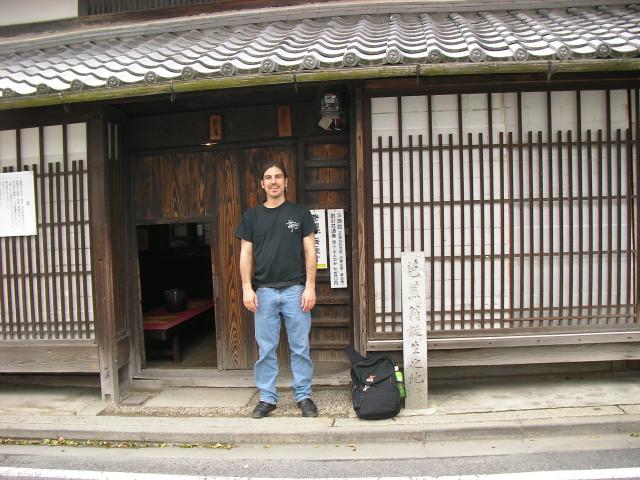Shinkansen tickets, artistic lap dance, drinking in moderation
On the Shinkansen to Nagoya.
The brain - and this is not at all an original observation - is a strange thing.
So here I am on this blazing fast train, Osaka to Kyoto in fifteen minutes (really - left Shin-Osaka 14;23, now stopped in Kyoto 14:38). Am I worried about a fiery crash? No, I was worried that, even with English available on the ticket machines, I wouldn't be able to figure out how to buy a ticket. (Shinkansen tickets are this weird two-part deal, one for the distance, one for the means by which you travel it.) But I puzzled it out. Hurray for me.
Stayed out late last night for Liz's sayonara party. She had to change her performance plan: renting a projector would have been prohibitively expensive, sort of defeating the whole chairtable purpose of the gig. So she decided to auction off a "lap dance". Well, seeing as it's all for a good cause, when the first few bids were low, I decided to it bump up a bit. Somehow David and I ended up tying with winning bids, and a round of rock-paper-scissors came out in a tie (two scissors), so we both chipped in 5000 Yen (about $40) and got to be participants in the show. (It was a PG-13, experimental improv "lap dance", not really the sort of thing you see at the "gentleman's club", more of a hoot than a turn-on. Fun.)
